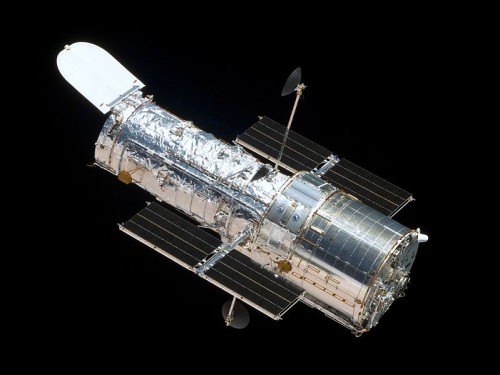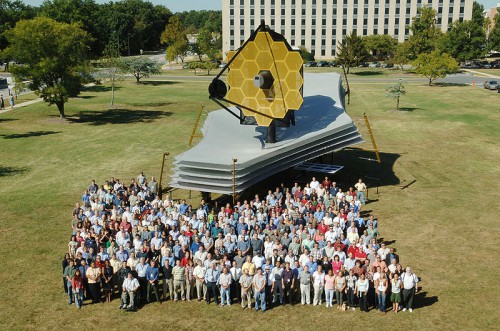
The atmosphere is a problem for astronomers for two big reasons: it’s turbulent, so it smears out the light from cosmic objects, and it blocks out huge swathes of the electromagnetic spectrum. To see the universe in extreme clarity and observe in regions of the spectrum such as the far ultraviolet, X-rays, and gamma-rays, instruments have to be lofted into space.As far back as 1946, U.S. astrophysicist Lyman Spitzer argued the case for an optical telescope in orbit that could see further and clearer than any instrument on the surface. His dream was eventually realized with the launch of the Hubble Space Telescope. But well before Hubble, there were space observatories such as NASA’s OAO (Orbiting Astronomical Observatory) series, launched between 1966 and 1970, that let us see the cosmos without the blurring and blocking effects of the atmosphere.
The first space telescopes were designed to open up whole new areas of astronomy—in much of the infrared and in the far-ultraviolet and X-ray regions—that are simply off-limits to ground-based observation. Some balloon-borne and sounding rocket experiments had given glimpses of what was to come. But these flights were only short-lived and used vehicles that made it hard to point the instruments accurately. The 1970s saw a sudden explosion in X-ray astronomy, giving scientists a new window on some of the most highly-energy objects in space: supernova remnants, X-ray binaries (involving neutron stars and stellar black holes), and active galactic nuclei. Infrared, ultraviolet, and gamma-ray astronomy also flourished with the launch of orbiting instruments of increasing size and power.

The big breakthrough in optical space-based astronomy came with Hubble, carried up in the payload bay of the Shuttle Discovery on April 24, 1990. From its 559-kilometer-high orbit, Hubble, equipped with an array of cameras and other instruments, and a 2.4-meter-wide mirror, has been revolutionizing astronomy at visible and near-infrared wavelengths for the past 23 years.
Other powerful telescopes have joined it, working in other regions of the spectrum. The Spitzer Space Telescope, named after Lyman Spitzer, has been exploring the infrared sky since 2003. Its supply of liquid helium, used for cooling its sensitive detectors, ran out in 2009, but two instruments on Spitzer’s Infrared Array Camera continue to make observations at short wavelengths. Hubble and Chandra are two of NASA’s so-called Great Observatories. The other two are the Compton Gamma Ray Observatory, which covered the extreme high-energy end of the spectrum before it was deorbited in 2000 following a gyroscope failure, and the Chandra X-ray Observatory. Chandra, launched in 1999, is a hundred times more sensitive to X-rays than any of its predecessors and has made some stunning breakthroughs, including the first detection of X-rays from the supermassive black hole at the center of our galaxy.
Space telescopes developed by other nations are also probing the cosmos—the European Planck mission to explore the microwave radiation left behind after the Big Bang, the joint U.S.-European Fermi Space Telescope, working at gamma-ray wavelengths, and others. And more is to come. Under construction, and much-delayed for budgetary reasons, is the giant James Webb Space Telescope, a successor to Hubble and Spitzer, with a segmented mirror 6.5 meters in diameter designed to work primarily in the infrared. Its gaze will reach back in time to when the first stars and galaxies were being formed.
Want to keep up-to-date with all things space? Be sure to “Like” AmericaSpace on Facebook and follow us on Twitter:@AmericaSpace



